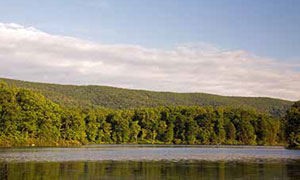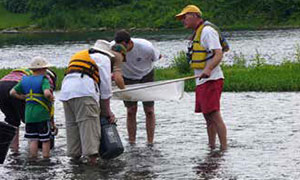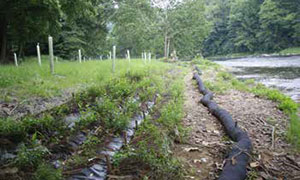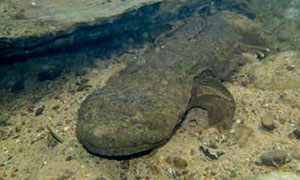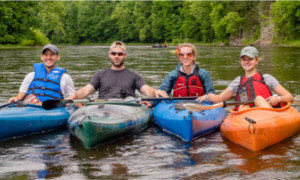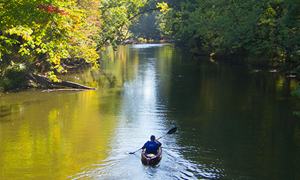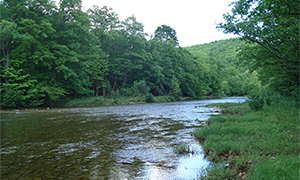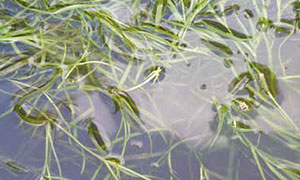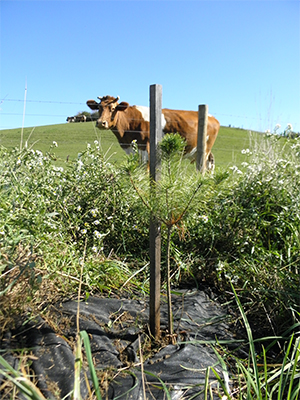Watershed Conservation
The Western Pennsylvania Conservancy is working to improve our region’s water quality. Through a number of strategic projects and initiatives - such as streambank restorations, in-stream habitat work and riparian plantings - our watershed conservation program works to protect and restore local rivers and streams. We’re improving wildlife habitats, drinking-water sources and opportunities for recreation, while working to ensure that our waterways remain healthy and viable for generations to come.
Conservation and Restoration Methods
We work with our partners and landowners to implement a variety of projects to restore local waterways.
Aquatic Science
Our scientists are surveying and assessing various freshwater aquatic systems across the region to help habitats and waterways.
Riparian Plantings
We’re planting and stabilizing these very sensitive areas to help clean and cool our waterways.
Get on the Water
Looking to explore the waterways? Find out where our Canoe Access Development Fund in making it easier.
Canoe Access Development Fund
Love to paddle? Our work is making the region’s rivers and streams easier to access and enjoy.
Watershed Mini Grant Program
This fund assists grassroots watershed groups with funding for water quality and restoration projects.
Our Impact
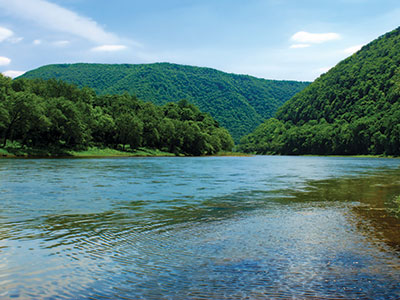
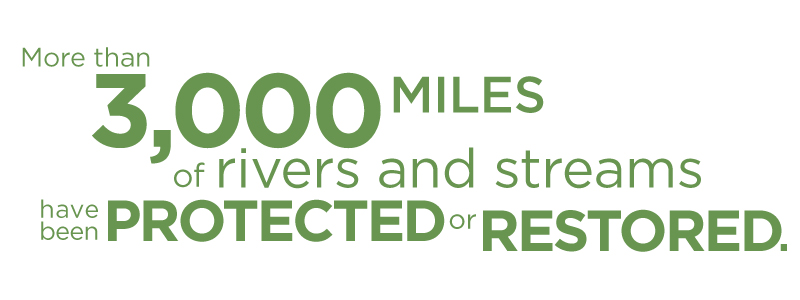
Restoring and Protecting Local Rivers and Streams
For nearly 20 years, the Conservancy has employed a concerted, strategic and scientific approach to improving the region's water quality. Our staff partners with local landowners, farmers and conservation and watershed groups to implement various restoration improvement projects in rivers and streams across our region. We’ve installed natural in-stream restoration projects to slow erosion, stabilized streambanks and strengthened soil along waterways. We also work closely with community and government partners to successfully install these and similar projects in watersheds across the region.
Because of this collaborative approach, we’ve protected and restored more than 3,000 miles of rivers, creeks and streams and planted more than 66,000 riparian trees and other greening methods to improve degraded aquatic and riparian habitats.
We take a scientific approach to measuring the effectiveness of improving water quality is through our aquatic science work. We also work to remove dams and replace culverts within our waterways, as these are effective methods to improve aquatic diversity.
Our watershed conservation work is tied to other conservation groups, organizations, and public and private partners who are working together to improve priority watersheds. Thanks to the support of our members and partners, we will continue to work closely to build a variety of community partnerships and public awareness of the importance of watershed restoration and conservation.
- Learn more about our conservation and restoration work.
- Learn about our mussel relocation work in the Allegheny National Forest.
- Read why planting riparian areas are important.
- Learn more about our aquatic science work.
- Discover why the Eastern hellbender salamander is important.
Why It Matters
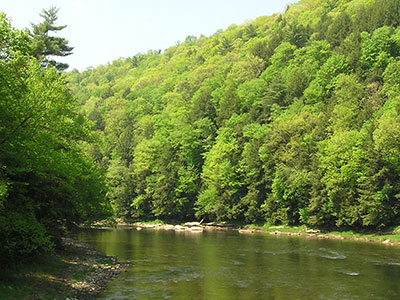
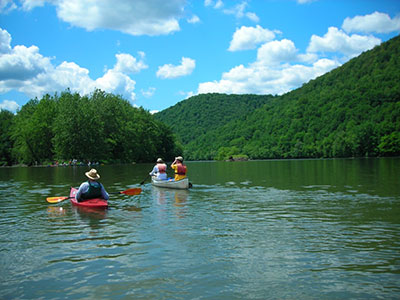

Because Clean Water Matters
Western Pennsylvania is fortunate to have miles of rivers, lakes and streams that contain fresh water and host a variety of aquatic life. But our waterways face a variety of different threats, such as pollution and eroding streambanks.
For example, excess nutrients and fertilizers from agricultural operations and sediment from eroding streambanks are jeopardizing water quality and the habitats of many species.
These types of pollution sources are the leading cause of water quality issues impacting our region’s waterways. With the help of our members and volunteers, we will continue to plant trees and other native vegetation to help filter fertilizers, chemicals and nutrients before they reach local waterways. So, we work with partners and farmers to help address water quality issues with best management practices for their farming operations.
Expanding recreational opportunities and enjoying wildlife are also a result of our watershed conservation efforts. Clean rivers and streams provide more opportunities for fishing, paddling, birding, and nature watching. Through our Canoe Access Development Fund, we have awarded funding to several watershed groups which have implemented 45 access sites along local waterways for canoers and paddlers.
What's New
- Agricultural best management practices
- Riparian trees and buffer plantings
- Aquatic organism passage
- Nutrient management planning
Our watershed conservation team provides a full range of services to landowners, conservation groups and farmers. Our focus areas include monitoring, assessments, restoration work and habitat improvement, among other services. Learn more about how landowners in your community can benefit from some of the services we provide. The Conservancy’s watershed conservation program has offices in Indiana, Ridgway and Hollidaysburg. Contact us at 724-471-7202 or water@paconserve.org for more information.
Get Involved
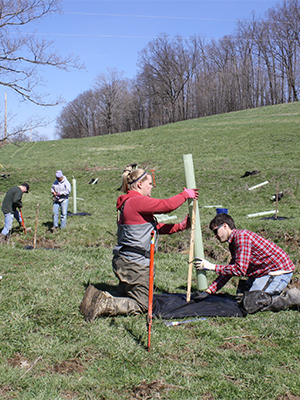 Throughout the year, there are several ways you can get involved in our watershed conservation work! Whether through volunteering to plant a tree or helping with office or clerical work, you will make a difference.
Throughout the year, there are several ways you can get involved in our watershed conservation work! Whether through volunteering to plant a tree or helping with office or clerical work, you will make a difference.
- Volunteers are always needed to help with riparian planting.
- Are you a farmer looking for assistance with BMPs? We can help.
- Use paddle access sites funded by our Canoe Access Development Fund.
- Become a member of WPC and support our watershed conservation work across the region.
To support landowners, farmers and conservation organizations, our watershed staff provides a full range of services to the community in watershed restoration. Contact us at 724-471-7202 or info@paconserve.org for more information.
For More Information:
Watershed Conservation Program
Western Pennsylvania Conservancy
1067 Philadelphia Street, Suite 101
Indiana, PA 15701

